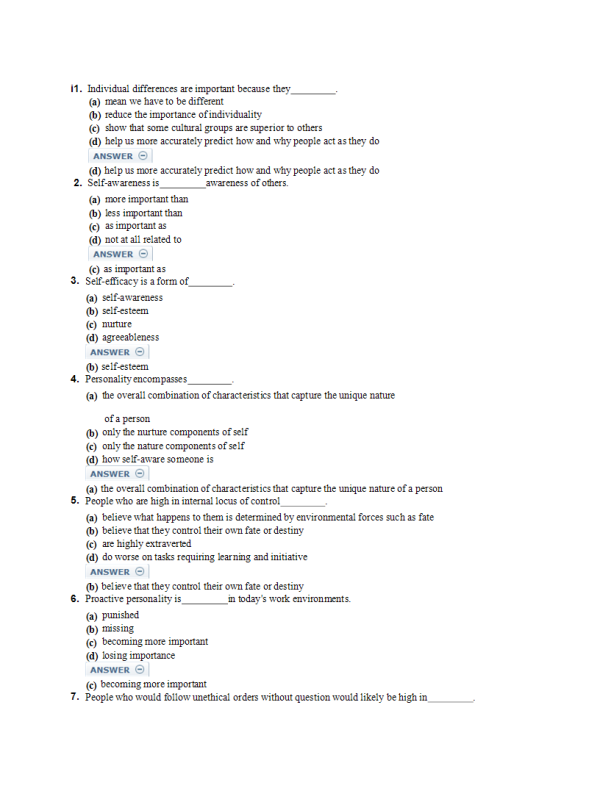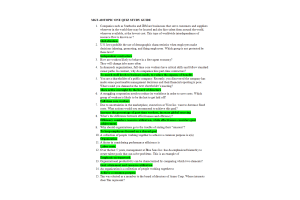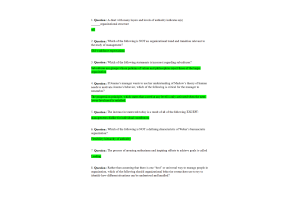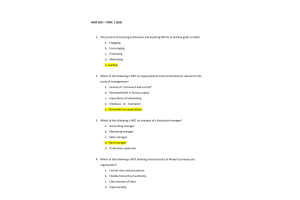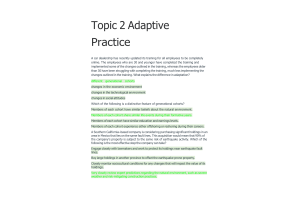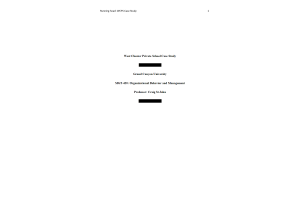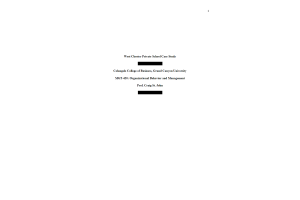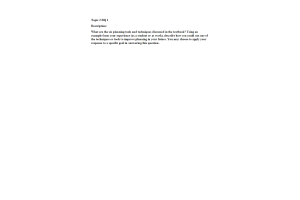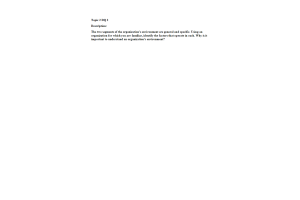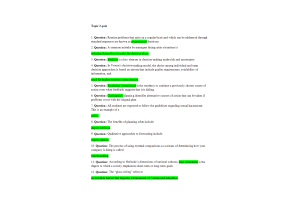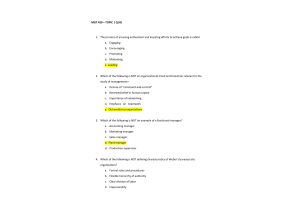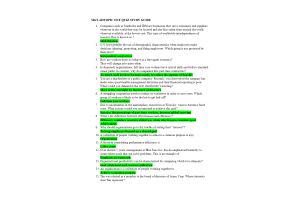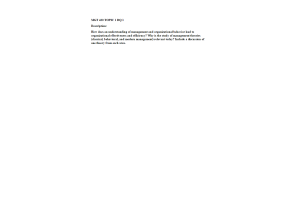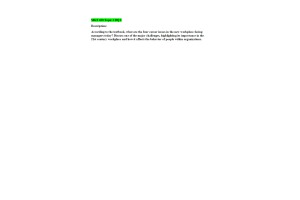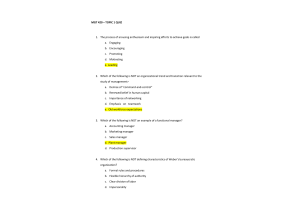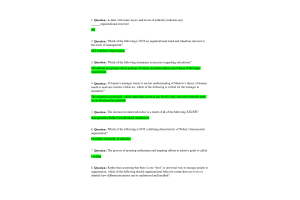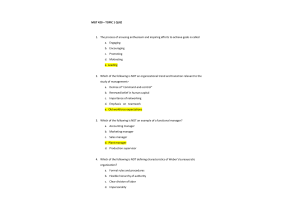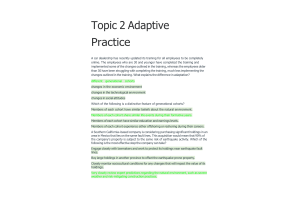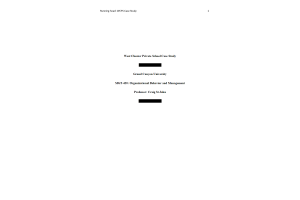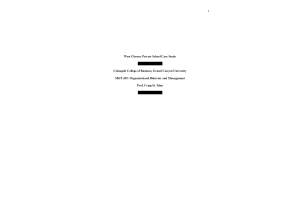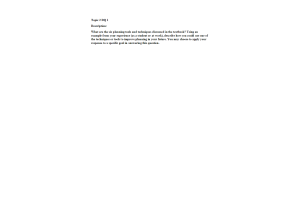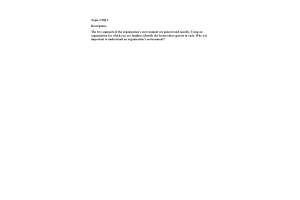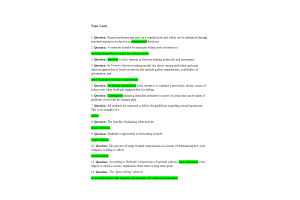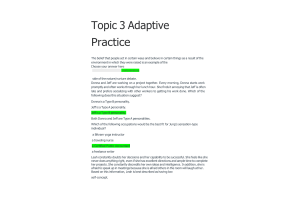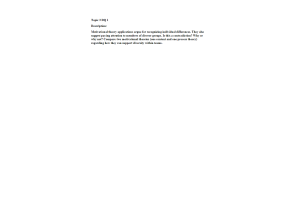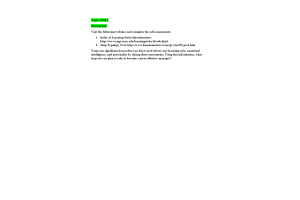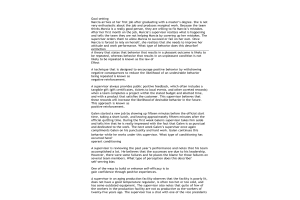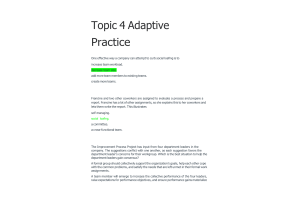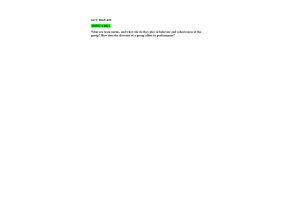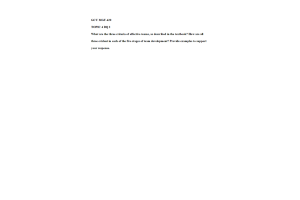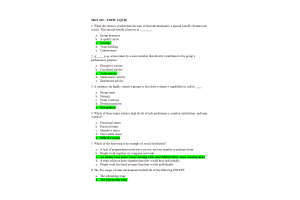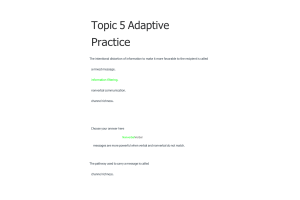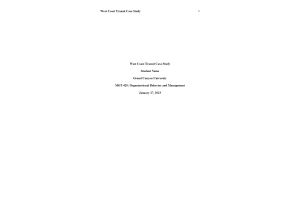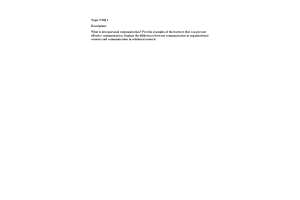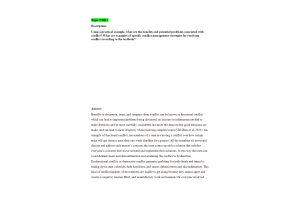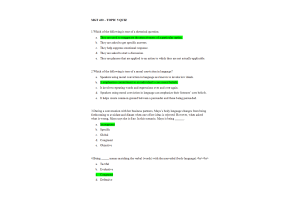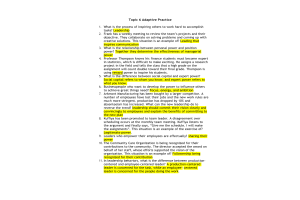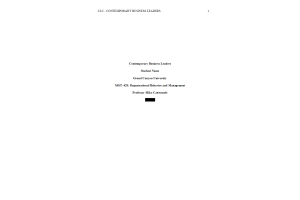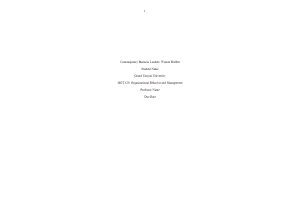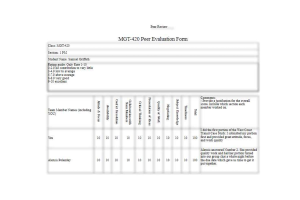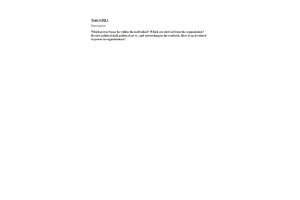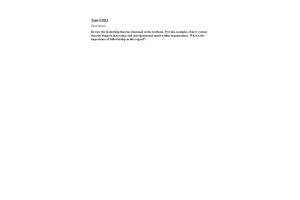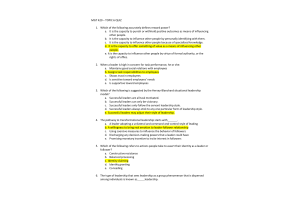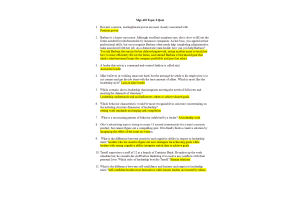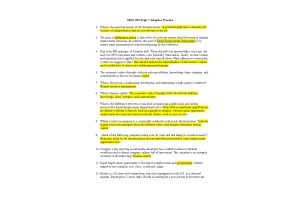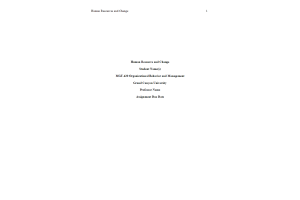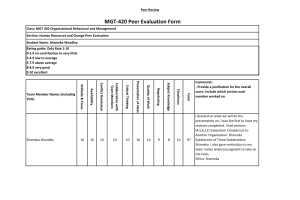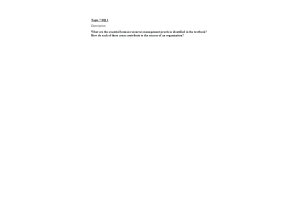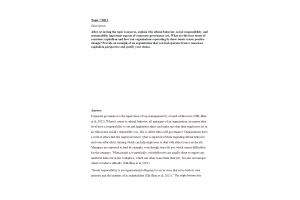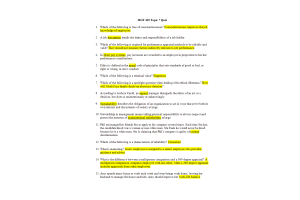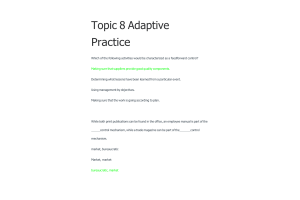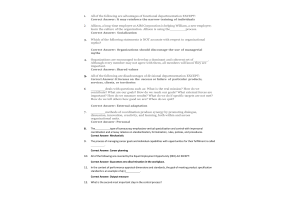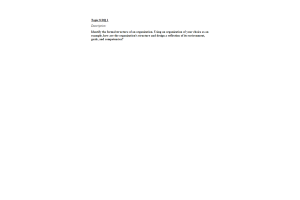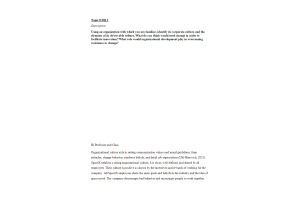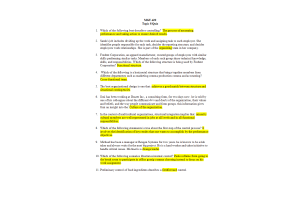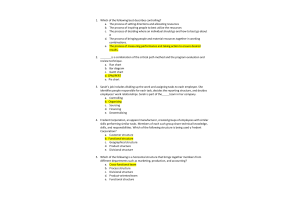MGT 420 Topic 3 Quiz (Collection)
- $39.00
MGT 420 Topic 3 Quiz (Version 1)
- Question: Individual differences are important because they .
- Question: Self-awareness is awareness of others.
- Question: Self-efficacy is a form of .
- Question: Personality encompasses .
- Question: People who are high in internal locus of control .
- Question: Proactive personality is in today's work environments.
- Question: People who would follow unethical orders without question would likely be high in .
- Question: Managers who are hard-driving, detail-oriented, have high performance standards, and thrive on routine could be characterized as .
- Question: Eustress is stress, while distress is stress.
- Question: Coping involves both and elements.
- Question: When it comes to values, .
- Question: Culture is .
- Question: The demographic makeup of the workforce .
- Question: Companies that experience the greatest benefits of workforce diversity.
- Question: The experience in which simply having various diversity groups makes that group category salient in people's minds is an example of .
MGT 420 Topic 3 Quiz (Version 2)
- Question: Perception is the process by which people and interpret information.
- Question: When an individual attends to only a small portion of the vast information available in the environment, this tendency in the perception process is called .
- Question: Self-serving bias is a form of attribution error that involves .
- Question: In fundamental attribution error, the influence of as causes of a problem are .
- Question: If a new team leader changes tasks for persons on his or her work team mainly “because I would prefer to work the new way rather than the old,” she may be committing a perceptual error known as .
- Question: Use of special dress, manners, gestures, and vocabulary words when meeting a prospective employer in a job interview are all examples of how people use .
- Question: The perceptual tendency known as a/an is associated with the “Pygmalion effect” and refers to finding or creating in a situation that which was originally expected.
- Question: If a manager allows one characteristic of a person, say a pleasant personality, to bias performance ratings of that individual overall, the manager is falling prey to a perceptual distortion known as .
- Question: The underlying premise of reinforcement theory is that .
- Question: The law of states that behavior followed by a positive consequence is likely to be repeated, whereas behavior followed by an undesirable consequence is not likely to be repeated.
- Question: ____ is a positive reinforcement strategy that rewards successive approximations to a desirable behavior.
- Question: B. F. Skinner would argue that “getting a paycheck on Friday” reinforces a person for coming to work on Friday but would not reinforce the person for doing an extraordinary job on Tuesday. This is because the Friday paycheck fails the law of reinforcement.
- Question: The purpose of negative reinforcement as an operant conditioning technique is to .
- Question: Punishment .
- Question: A defining characteristic of social learning theory is that it .
MGT 420 Topic 3 Quiz (Version 3)
- Question: A/an is a rather intense but short-lived feeling about a person or a situation, whereas
- Question: When someone is feeling anger about something a co-worker did, she is experiencing a/an , but when just having a bad day overall she is experiencing a/an .
- Question: Emotions and moods as personal affects are known to influence .
- Question: If a person shows empathy and understanding of the emotions of others and uses this to better relate to them, she is displaying the emotional intelligence competency of .
- Question: The component of an attitude indicates a person's belief about something, whereas the component indicates positive or negative feeling about it.
- Question: Describes the discomfort someone feels when his or her behavior is inconsistent with an expressed attitude.
- Question: Affective events theory shows how one's emotional reactions to work events, environment, and personal predispositions can influence .
- Question: The tendency of people at work to display feelings consistent with the moods of their co-workers and bosses is known as .
- Question: When an airline flight attendant displays organizationally desired emotions when interacting with passengers, this is an example of .
- Question: A person who always volunteers for extra work or helps someone else with their work is said to be high in .
- Question: The main difference between job involvement and is that the former shows a positive attitude toward the job and the latter shows a positive attitude toward the organization.
- Question: Job satisfaction is known to be a good predictor of .
- Question: The best conclusion about job satisfaction in today's workforce is probably that .
- Question: Which statement about the job satisfaction-job performance relationship is most consistent with research?
- Question: What does “performance contingent” mean when rewards are discussed as possible influences on satisfaction and performance?
MGT 420 Topic 3 Quiz (Version 4)
- Question: Motivation is defined as the level and persistence of .
- Question:A content theory of motivation is most likely to focus on .
- Question:A process theory of motivation is most likely to focus attention on .
- Question: When a team member shows strong ego needs in Maslow's hierarchy, the team leader should find ways to link this person's work on the team task with .
- Question: According to McClelland, a person high in need achievement will be motivated by .
- Question: In Alderfer's ERG theory, the needs best correspond with Maslow's higher-order needs of esteem and self-actualization.
- Question: Improvements in job satisfaction are most likely under Herzberg's two-factor theory when are improved.
- Question: In Herzberg's two-factor theory factors are found in job context.
- Question: Both Barry and Marissa are highly motivated college students. Knowing this I can expect them to be in my class.
- Question: In equity theory, the is a key issue.
- Question: A manager's to enforce a late-to-work policy the same way for all employees is a violation of justice.
- Question: When someone has a high and positive expectancy in expectancy theory of motivation, this means that the person .
- Question: In expectancy theory, is the perceived value of a reward.
- Question: Which goals tend to be more motivating?
- Question: The MBO process emphasizes as a way of building worker commitment to goal accomplishment.
